Fluid Simulation
We are researching methods to reproduce fluid phenomena such as water and air flow in computer graphics using physical simulation.
Visual Simulation of Soil-Structure Destruction with Seepage Flows


In this research, we propose a method for simulating soil-structure coupling with water, which involves a series of visual effects, including wet granular materials, seepage flows, capillary action between grains, and dam breaking simulation. We develop a seepage flow based SPH-DEM framework to handle soil and water particles interactions through a momentum exchange term. In this framework, water is seen as a seepage flow through porous media by Darcy’s law; the seepage rate and the soil permeability are manipulated according to drag coefficient and soil porosity. A water saturation-based capillary model is used to capture various soil behaviors such as sandy soil and clay soil. Furthermore, the capillary model can dynamically adjust liquid bridge forces induced by surface tension between soil particles. The adhesion model describes the attraction ability between soil surfaces and water particles to achieve various visual effects for soil and water. Lastly, this framework can capture the complicated dam-breaking scenarios caused by overtopping flow or internal seepage erosion that are challenging to simulate.
A Fluid Simulation Method with Viscosity Change Based on Gelatinization Phenomenon
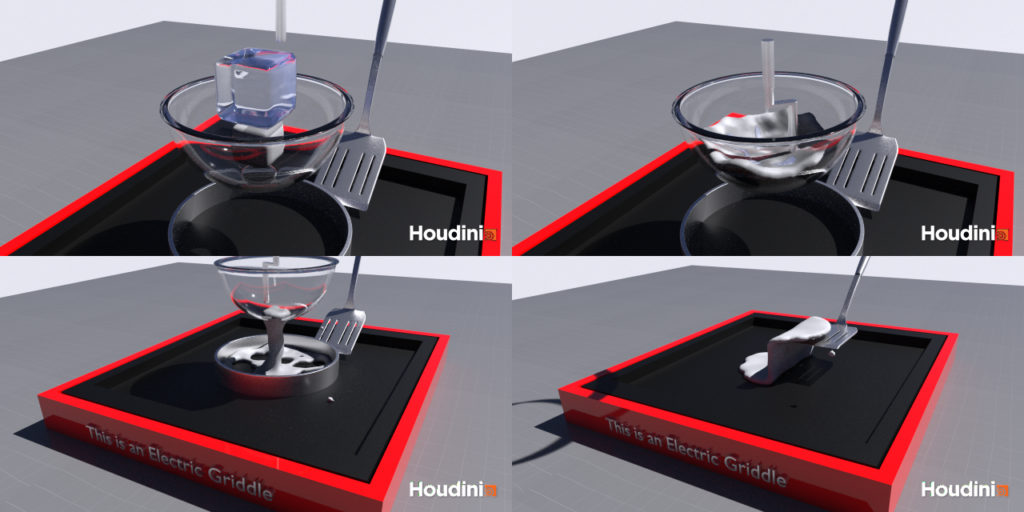
In this research, we propose a method to calculate the non-linear viscosity change accompanied by the gelatinization phenomenon of wheat flour suspension using fluid simulation. In the proposed method, a simulation is performed by considering the change in viscosity due to the gelatinization phenomenon that occurs when the suspension is mixed or heat is applied. The degree of the gelatinization phenomenon is calculated from the change in thermal energy, assuming that the change in viscosity due to the gelatinization phenomenon is a state change with latent heat. Finally, we integrated the viscosity change due to the mixing and gelatinization phenomenon and conducted a simulation experiment assuming crepe making, and confirmed the effectiveness of the method.
Daytime Fireworks Simulation with Parachute Based on Aerodynamics
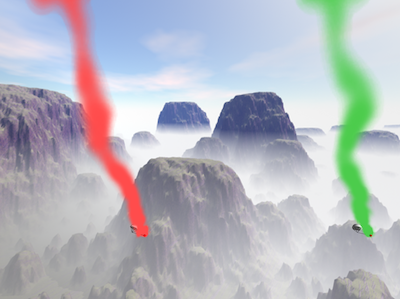
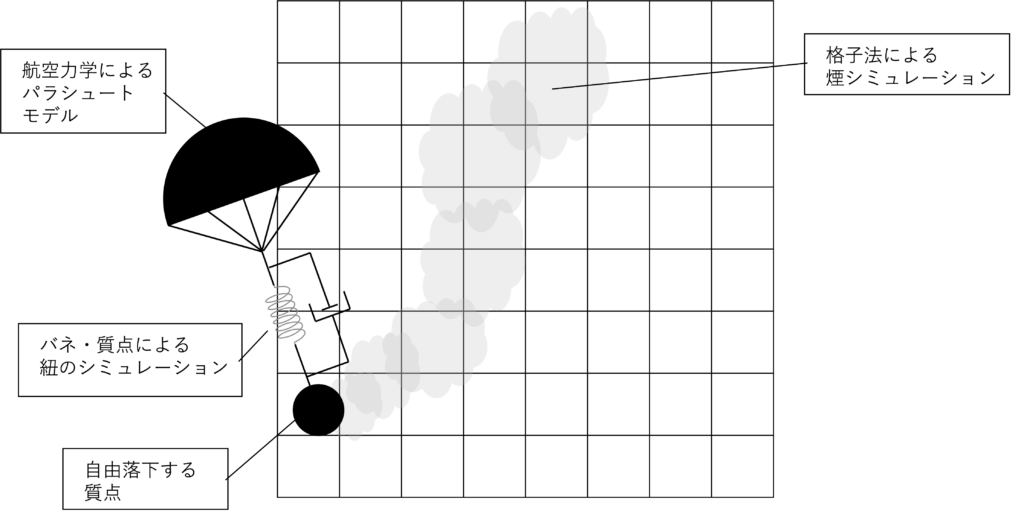
This paper proposes a method to reproduce daytime fireworks as CG animation using physical simulations. Daytime fireworks are a kind of fireworks and this paper focuses on daytime fireworks called Enryu. Enryu is a firework that launches the parachute with the smoke candle and watch the smoke follow a spiral trajectory as the parachute falls. In this paper, we simulate Enryu by combining the simulation of the parachute and the smoke from the fluid simulation. In the simulation of the parachute, the top part is modeled as a parachute model based on aerodynamics, the bottom part is modeled as a single mass point, and the string connecting the two part is represented by spring and damper. We simulated smoke by grid-based fluid simulation, and Enryu is simulated by blowing smoke from the bottom part of the parachute.
Development of incompressible SPH method that enables multi-phase fluid simulation
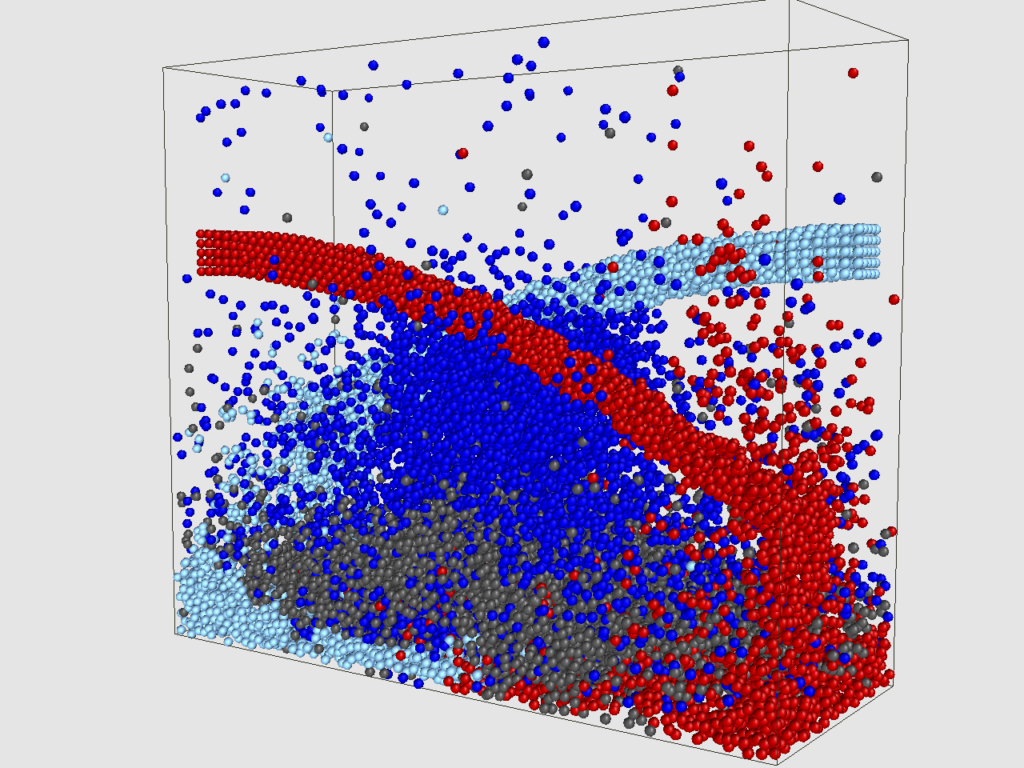
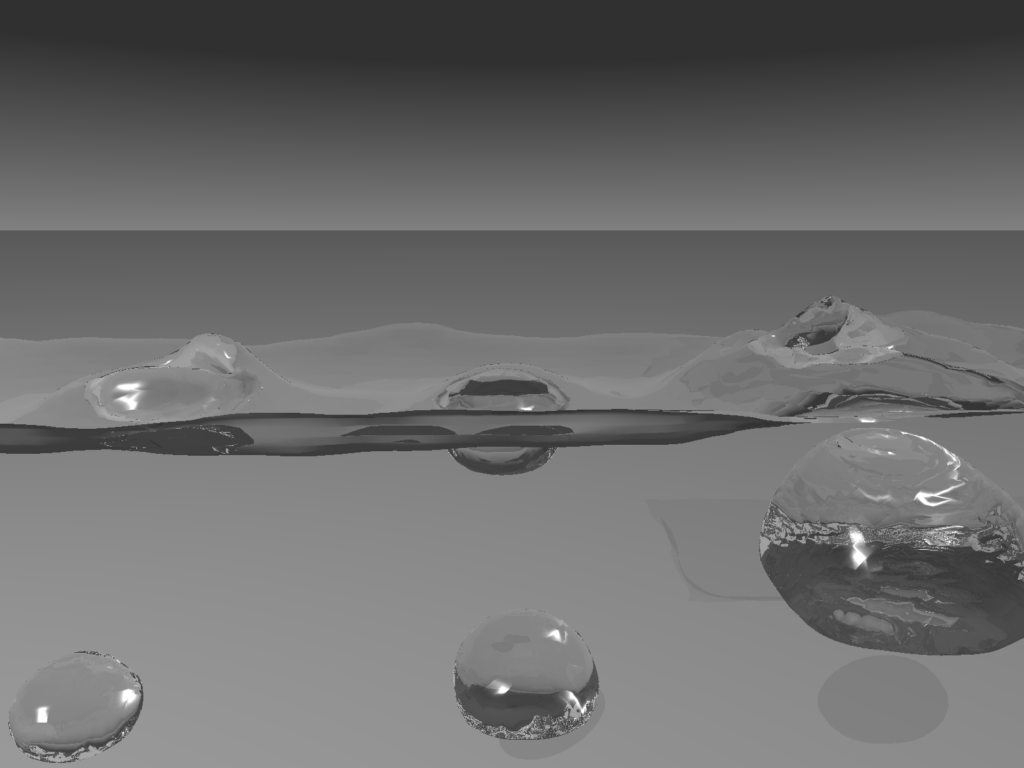
In this research, we present a new SPH (Smoothed Particle Hydrodynamics) method for multi-fluid. Our idea is to extend an Implicit Incompressible SPH (IISPH) for multi-fluid using a particle density. By replacing the formulation to solve the pressure poisson equation (PPE) in IISPH with a new equation based on particle densities, it realized to simulate more stable multi-fluid which considers of higher density ratios, incompressibility, and large time step. This paper shows the simulation of bubble behaviors such as rising, merging, floating, and rupturing, using our proposed method. Additionally, we also present a method to represent a thin film generated by the floating bubbles on the liquid surface by introducting an anisotropic filter for the computation of the surface tension.
Simulation of flame considering combustion process
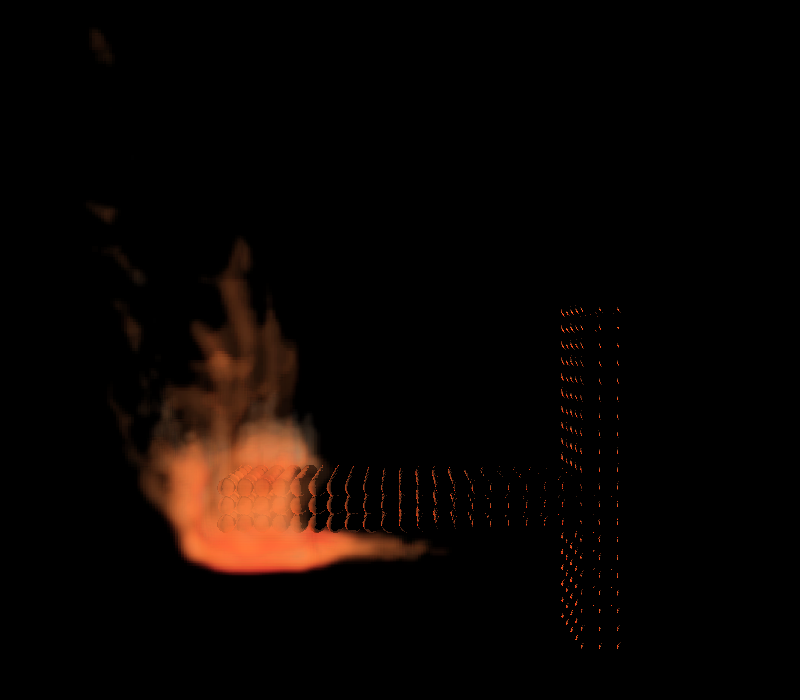
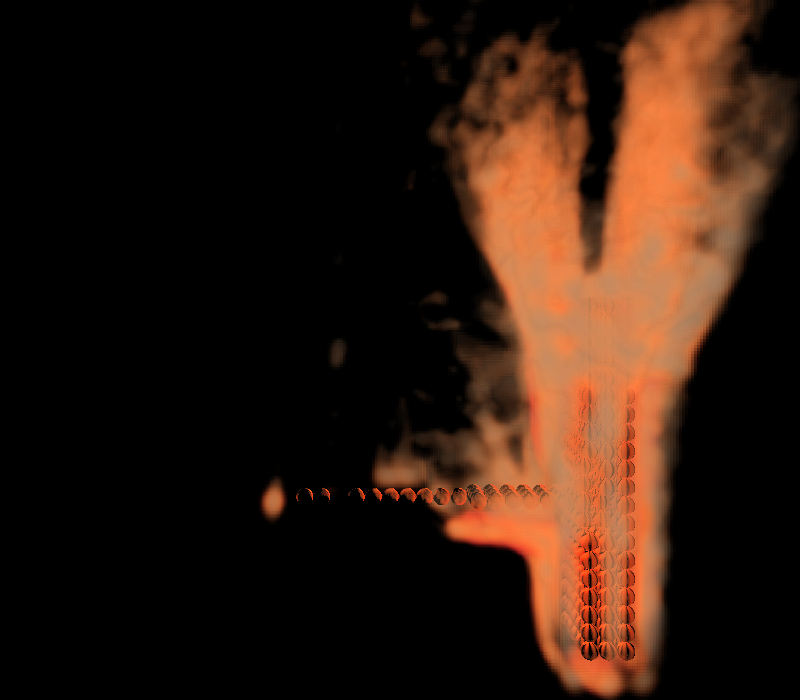
Flame is one of the most frequently used natural phenomena in the field of computer graphics (CG). However, due to its complexity, a simple model without considering chemical phenomena has been frequently used. A reaction with oxygen, which is one of important phenomenon for flame, has not been considered in the previous researches, while a flame in real-world would be intensed by supplying a oxygen. Also, the unique fluctuation of the flame such as the temperature fluctuation due to the incomplete combustion has not realized. In this research, we model the concept of reaction with oxygen and the chemical phenomena that occur in the combustion process, and propose a new flame simulation method using it. The flame is simulated independently by the particle method and the oxygen by the lattice method, and the physical quantity is exchanged between the two simulations to handle the combustion considering the chemical reaction. We realized the real-time simulation by using a GPU parallel computation.
An Efficient Boundary Handling with a Modified Density Calculation for SPH
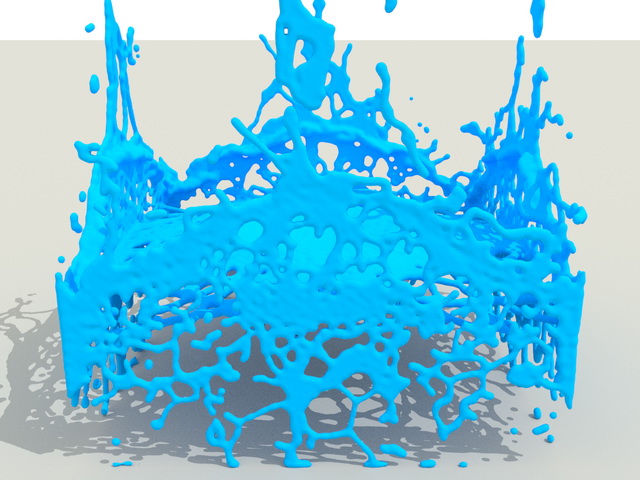
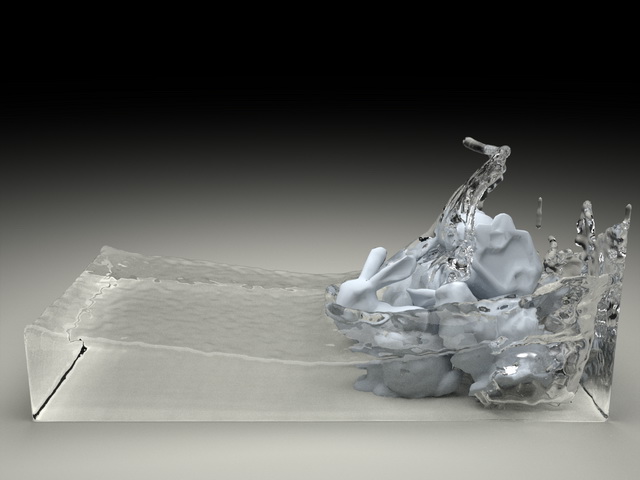
We propose a new boundary handling method for smoothed particle hydrodynamics (SPH). Previous approaches required the use of boundary particles to prevent particles from sticking to the boundary. We address this issue by correcting the fundamental equations of SPH with the integration of a kernel function. Our approach is able to directly handle triangle mesh boundaries without the need for boundary particles.
Particle-based Shallow Water Simulation with Splashes and Breaking Wave
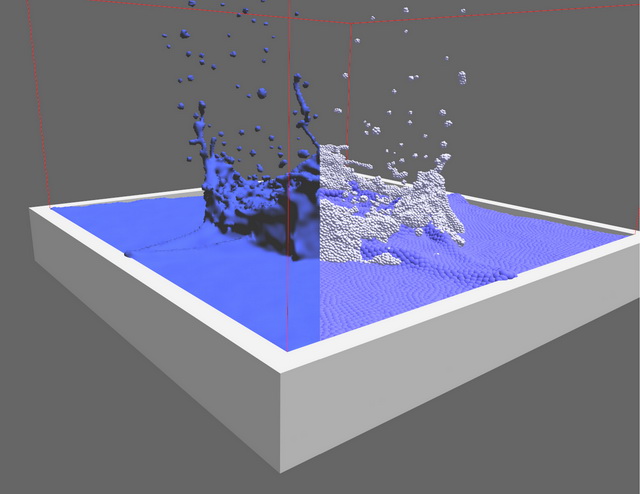
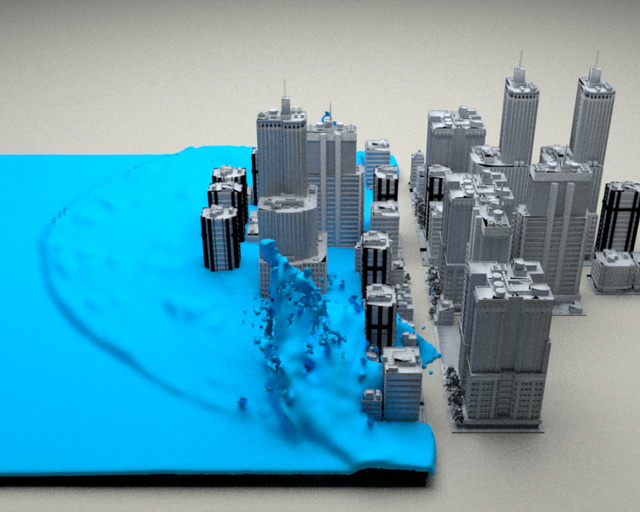
We propose a new boundary handling method for smoothed particle hydrodynamics (SPH). Previous approaches required the use of boundary particles to prevent particles from sticking to the boundary. We address this issue by correcting the fundamental equations of SPH with the integration of a kernel function. Our approach is able to directly handle triangle mesh boundaries without the need for boundary particles.
Fluid-Solid Interaction Simulation Using Inter-Particle Potential Force
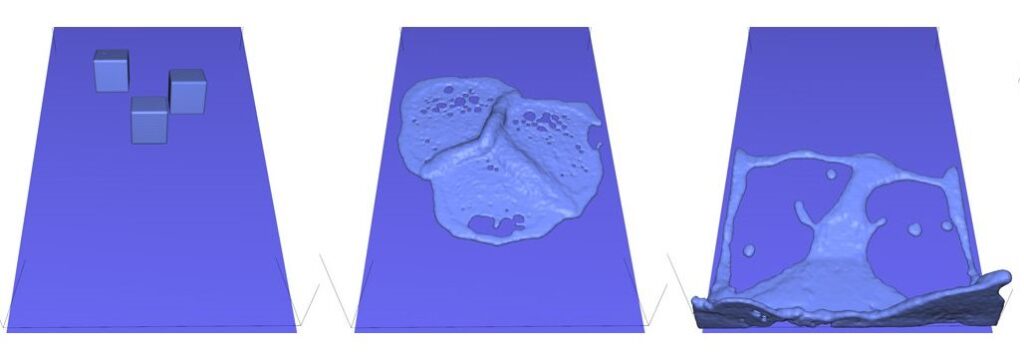
We proposes a fluid simulation method with a surface tension effect using interparticle interaction forces based on a position based fluid. Behavior of fluid is efficiently calculated by using SPH (Smoothed Particle Hydrodynamics), which represents fluid as particles, and the method appends the surface tension force as the interaction force between the particles. Also, interaction between fluid and solid boundary is considered by adding solid particles along the boundary. Furthermore, this paper propose an instinctive controlling method for liquid shape, such as a water drop, by using a contact angle.
Hair Simulation
Hair is an essential element in character animation. We are studying the reproduction of hair movement by physical simulation.
Particle Based Hair Plastic Deformation with Fluid Simulation
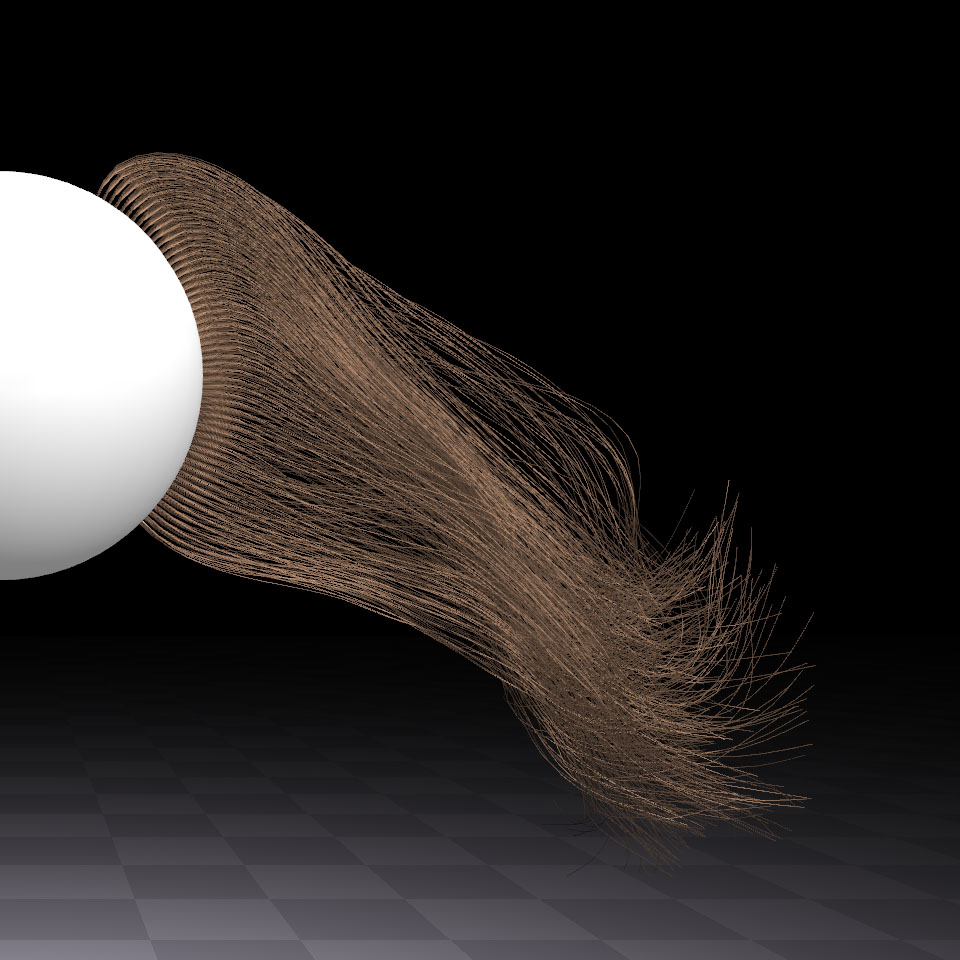
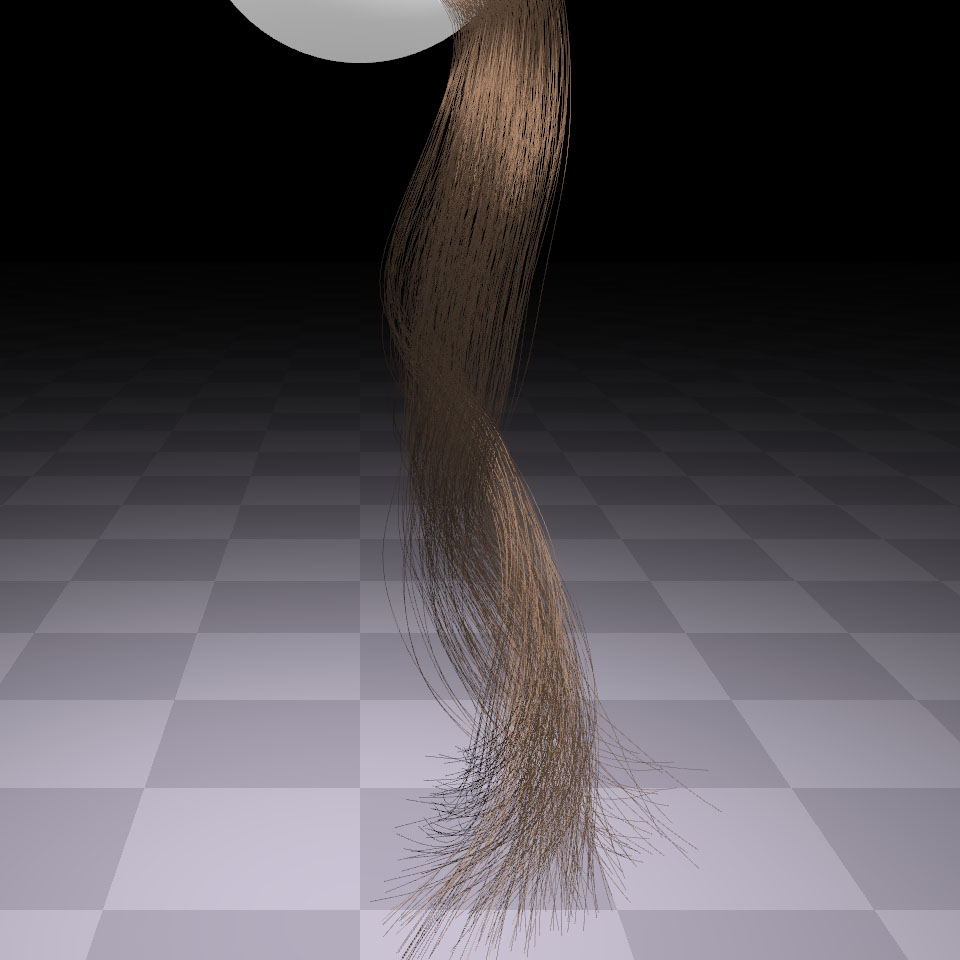
We present an efficient method of simulating hair deformation with fluid simulation. We focus on the hair-air interaction including turbulent flow because it drastically affects hair streaming. And we calculate hair plastic deformation from temperature and moisture. Our method solves both hair-hair and hair-air interaction with a unified particle-based method that enables fast, natural two-way interaction. It realizes the hair streaming effect and hair plastic deformation using a hairdryer. Also, we accelerated the simulation using parallel computation by GPU.
Simulation of plastic deformation of hair based on internal chemical bonds
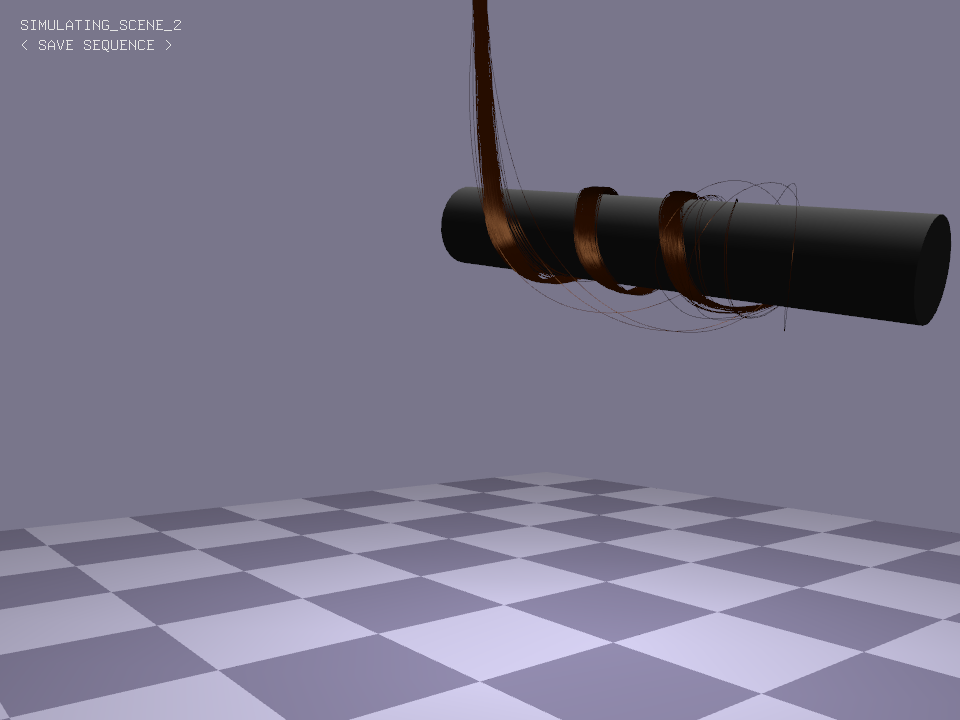
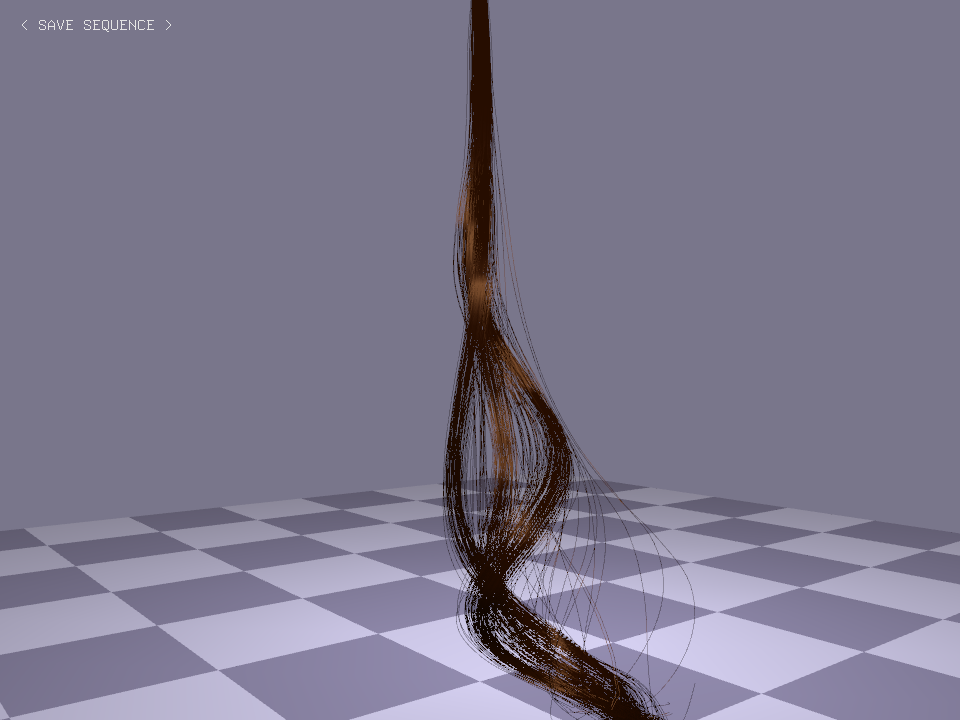
In this research, we propose a simulation method of human hair which enables plastic deformation such as a permanent wave and bed hair. Although simulation of hair is indispensable for expressing characters such as a human in the field of computer graphics, most previous simulation methods just treat the hair as an elastic body that is easy to simulate. Plastic deformation such as the influence of bed hair and hairdressing is not considered. In the proposed method, we introduce internal chemical bonds, in which actual hair plastically deforms based on its bonds. We simulate these bonds by repeating cutting and recombining process. By combining these with the position based method, a high-speed stable simulation has been realized.
Terrain Generation
Natural terrain is required in games and computer simulations. We are researching methods to automatically generate such terrain through physical simulation.
A Simulation for Coastal Landform Generation with Notch Phenomenon and Sand Transport/Sedimentation
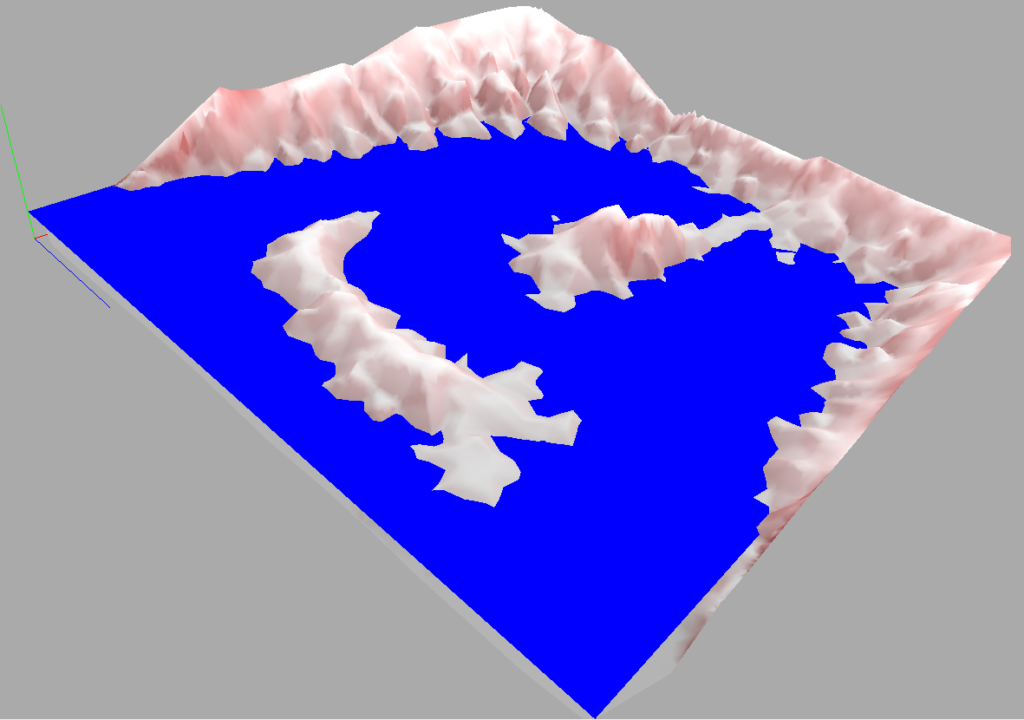
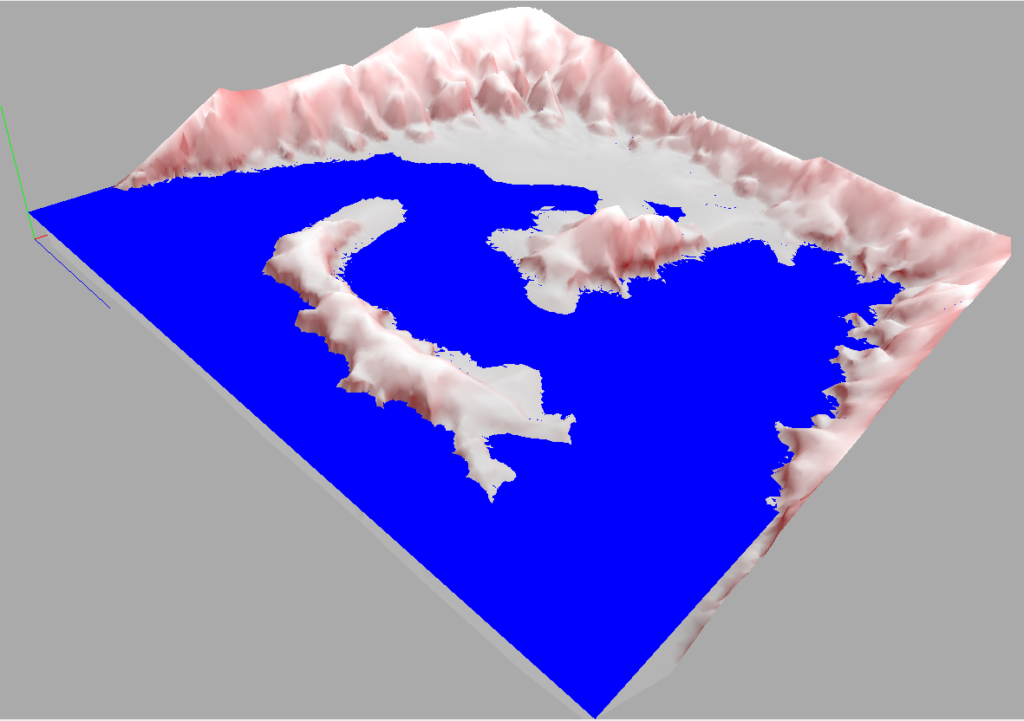
In this research, we propose a simulation method for the formation of rocky coasts that are eroded by waves and sandy beaches that are formed by the transport of sediments such as sand. For rocky shores, SCAPE, which is a model for numerically calculating wave erosion and receding, is extended to three-dimensional terrain, and wave-cut notches in which the shore is scooped out by waves are also considered. For sandy beaches, a model is applied in which the suspended load layers and the bed load layers are considered separately to consider the effects of sand sedimentation. By combining these simulations, we conducted simulation experiments to reproduce wave erosion and sand transport/sedimentation and confirmed the effectiveness of the proposed method.
Coastal landform generation based on particle method and mathematical geography
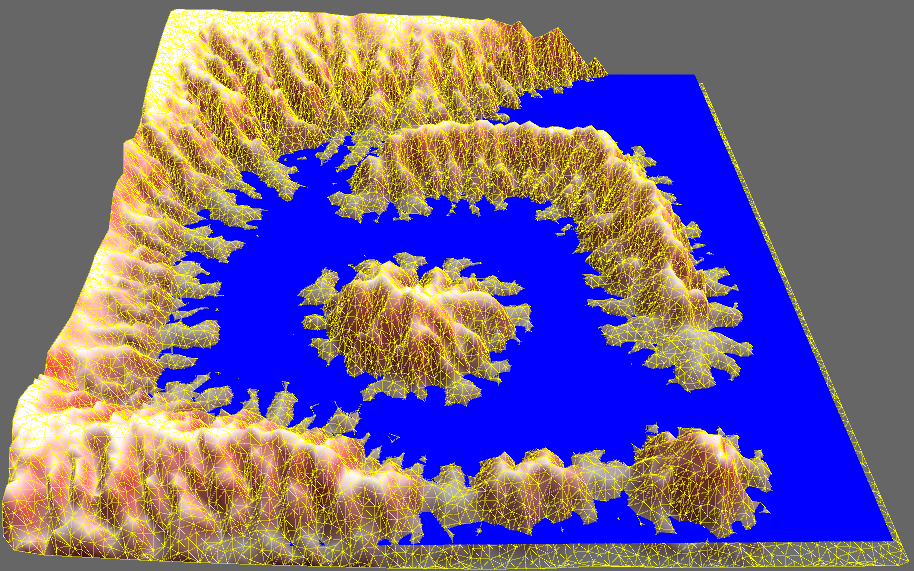
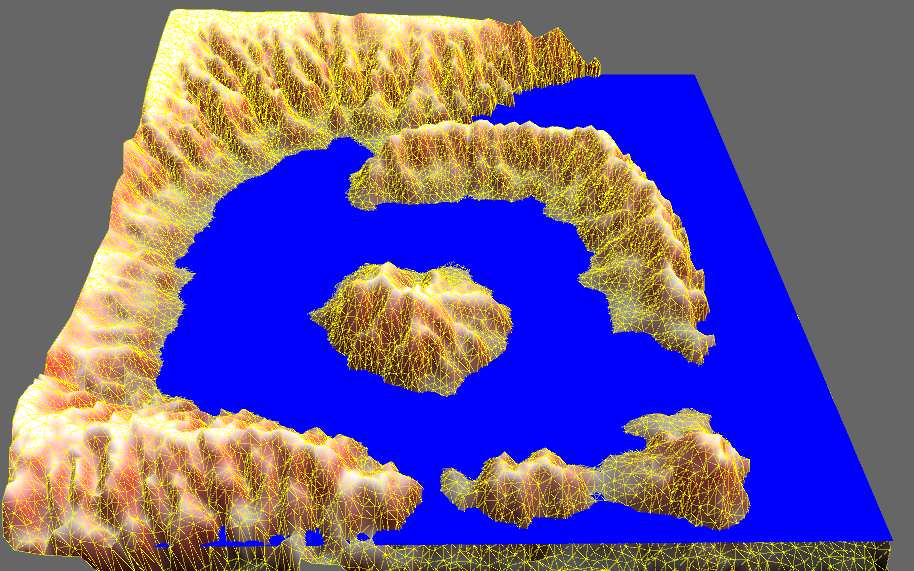
We propose a coastal terrain generation method based on a particle method and mathematical geography. The terrain generation is one of the important topic for computer graphics field and we focus on the coastal landform generation. In order to simulate the generation of coast, we have to consider a ocean wave. Most of previous terrain generation methods adopted simple water flow simulations to calculate the erosion, while it is difficult to accurately simulate the ocean wave because of its scale and its complex flow. Our method uses a low dimensional particle method to calculate the movement of the ocean wave and mathematical geography to simulate the change of terrain due to the wave. As a result, we archived a fast terrain generation for rock and sand coast.
Deformation/Fracture Simulation
We are researching to reproduce phenomena such as deformation of elastic bodies like rubber and elastoplastic bodies like clay, and fracture of rigid bodies by physical simulation.
Modified expression for real-time fracture animation
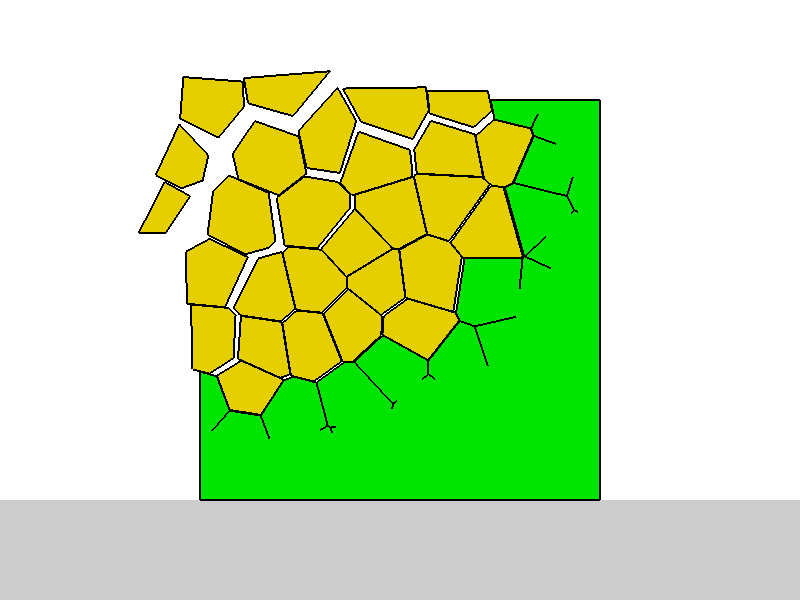
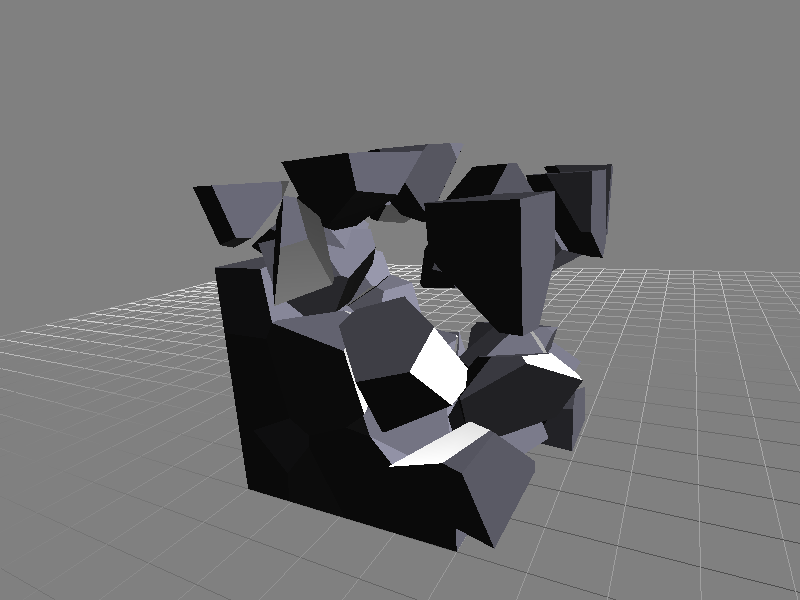
Fracture expression that an object is broken are widely used in CG animations. In real-time applications such as games, non-physical simulation methods, such as a pre-dividing method in which pieces of fragments are generated in advance or a dynamic dividing method by a geometrically defined fracture pattern are mainly used due to its fast computation. These previous methods cannot express a crack propagation effect. In this research, we introduced the idea of graph structure with the dynamic dividing method, and proposed a step-wise fracture representation method in which an object is gradually broken from the point where the force is applied. This enables slow motion representation of real-time fracture simulation in interactive applications.
Particle-based Elastoplastic Simulation with Slave Particles
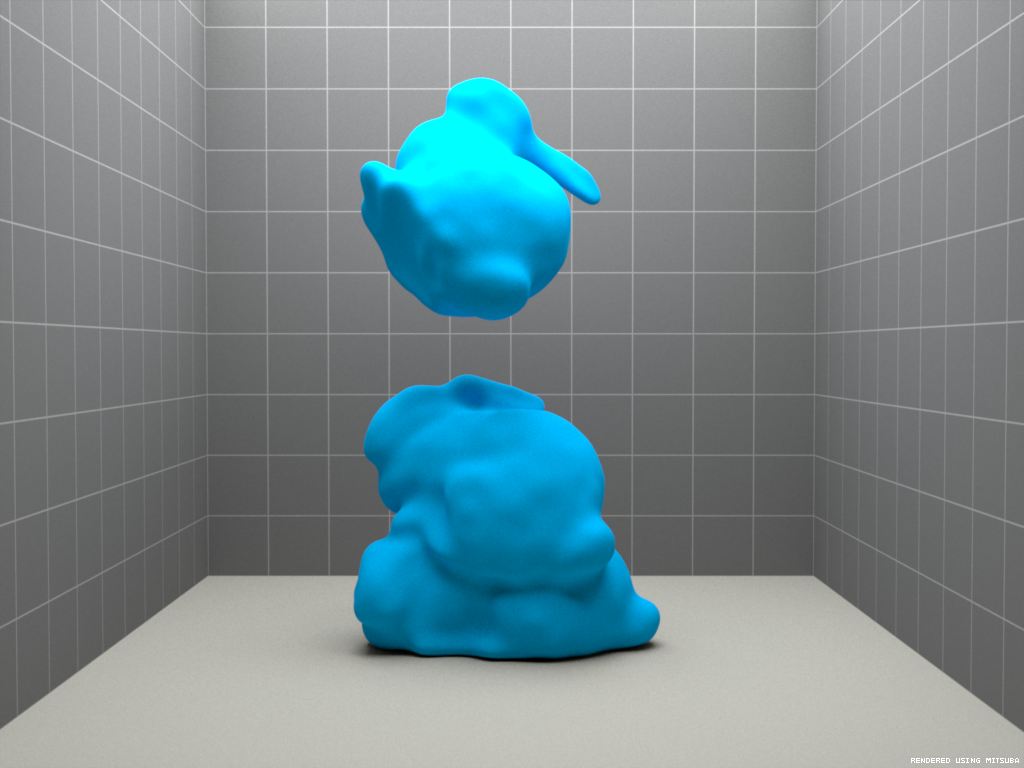
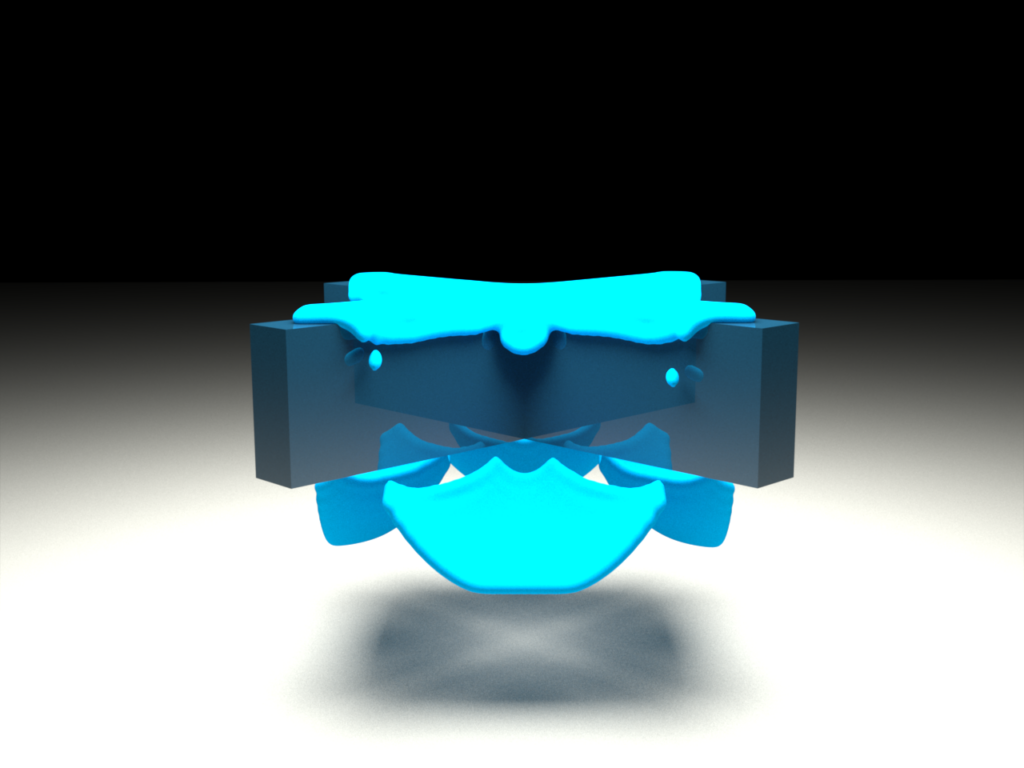
We propose a particle-based stable simulation method for elastoplastic materials. Our method uses slave particles, which are different from the particles used in previous methods. The particle representing the object is called the master particle. Slave particles allow for stable calculation of the deformation gradient for the elastoplastic because they are initially placed at positions different from those of master particles. Slave particles are advected by the motions of nearby master particles. Further, by adding and removing slave particles, it is possible to treat deformation with plastic splitting and/or merging.
Phase Change Simulation
We are studying physical simulation of phenomena involving phase changes, such as ice melting into water and boiling of water into steam.
Realtime Simulation of Ice Melting Phenomenon Using Position-based Method
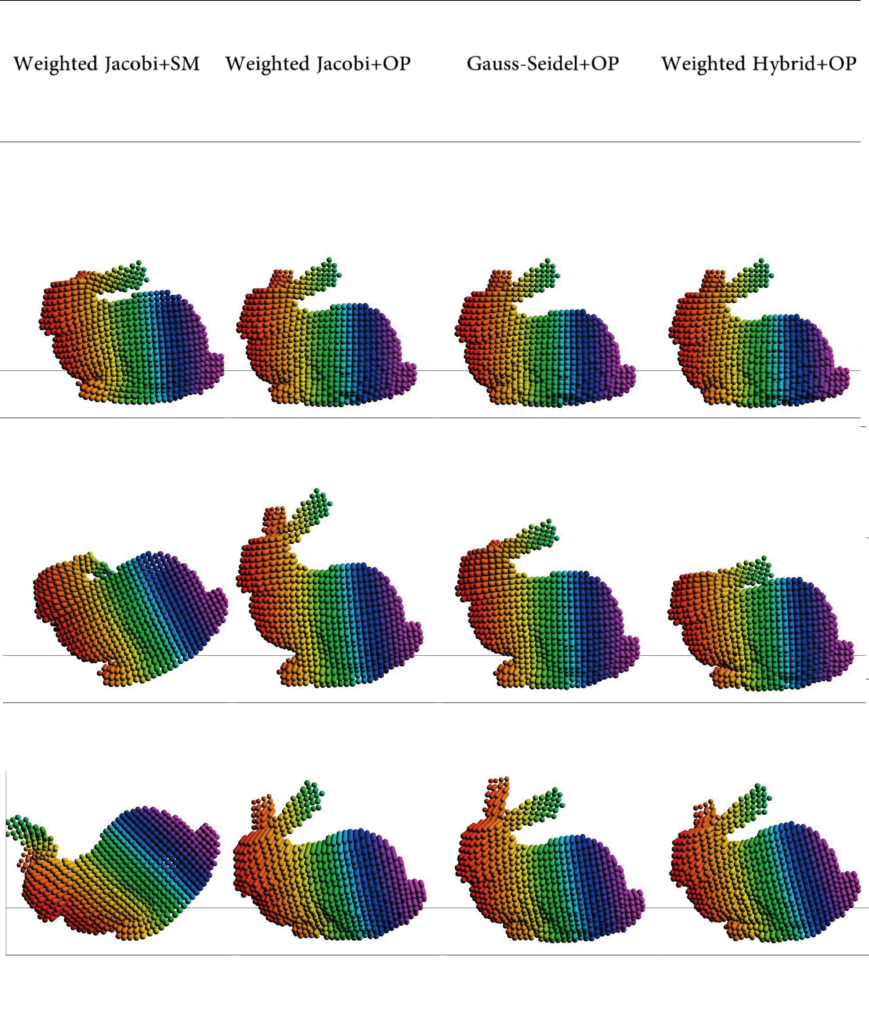
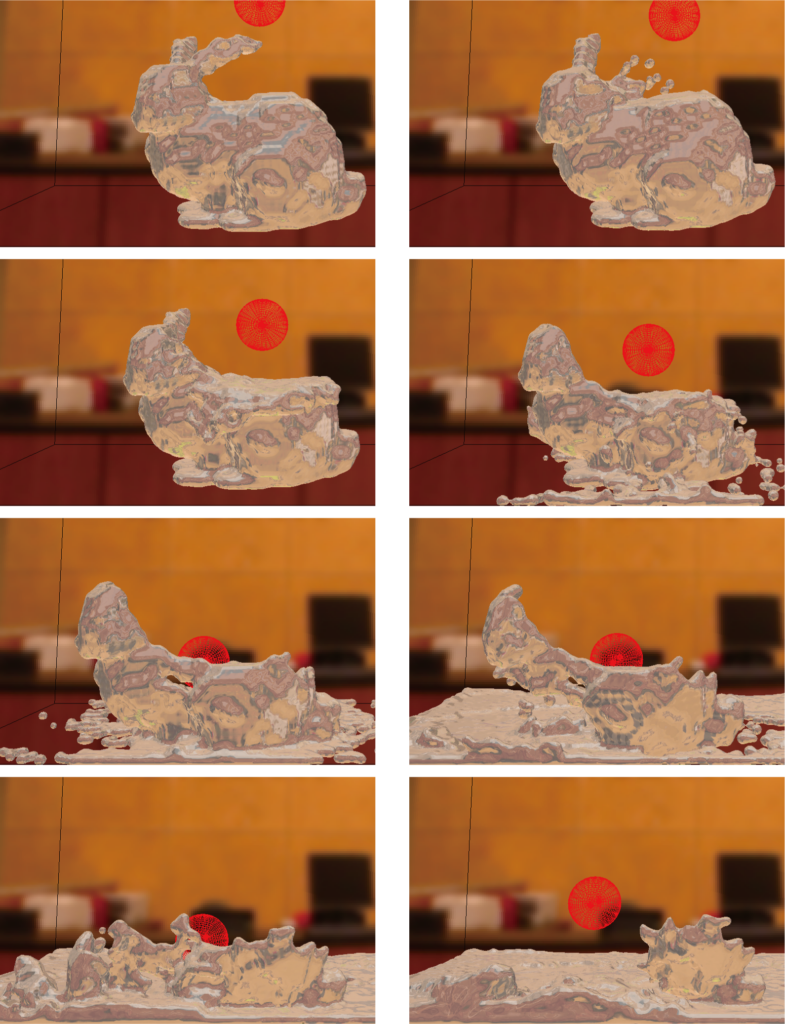
Reproducing the phase change phenomenon of an object like ice in CG is one of the big problems. In this research, we propose a method to reproduce the phase change between solid and liquid in real time, using the particle method that approximates the object as a set of particles. In the phase change simulation between solid and liquid, since the motion also changes according to the change of the solid shape, the structural change of the solid such as separation and bonding becomes a problem. We solve this problem by adopting a bottom-up motion calculation method based on connection information, unlike the top-down rigid body simulation in the conventional research. At this time, a new problem arises in which it is difficult to represent a hard object, but this is solved without any decrease in calculation speed by the calculation of particle sampling, interpolation of posture between particles, and weighted Jacobi method based on deformation.
Other Simulations
We are studying the simulation of various physical phenomena such as auroras and water caustics.
Simulation Controlling Method for Generating Desired Water Caustics
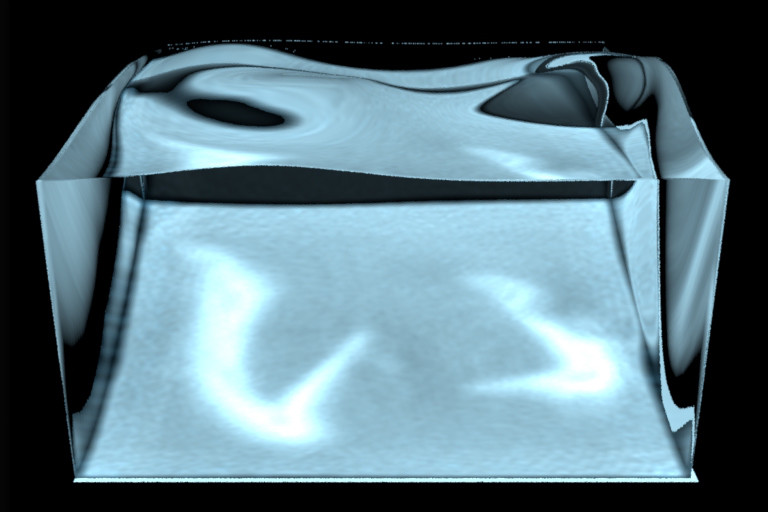
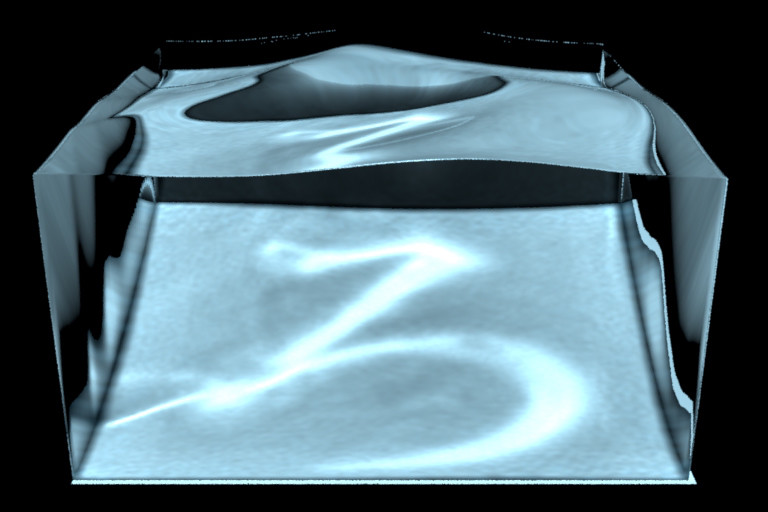
In this study, we present a method for controlling the surface shape of transparent liquids that generate caustics due to luminance distribution of an arbitrary image. Our method consists of the process of caustics design and the process of liquid surface control. While designing caustics, an arbitrary grayscale image is treated as the input image and the surface shape of transparent liquid that generates caustics is calculated based on the luminance distribution of that input image. We utilize the Poisson’s equation to obtain a continuous liquid surface. A driving force based on the current height field and the target height field is introduced as the external force. This force that configures the current liquid surface into the target shape in the previous process is calculated and the change in the water surface and the caustics due to this force is verified using fluid simulation.
Artist controllable Aurora simulation
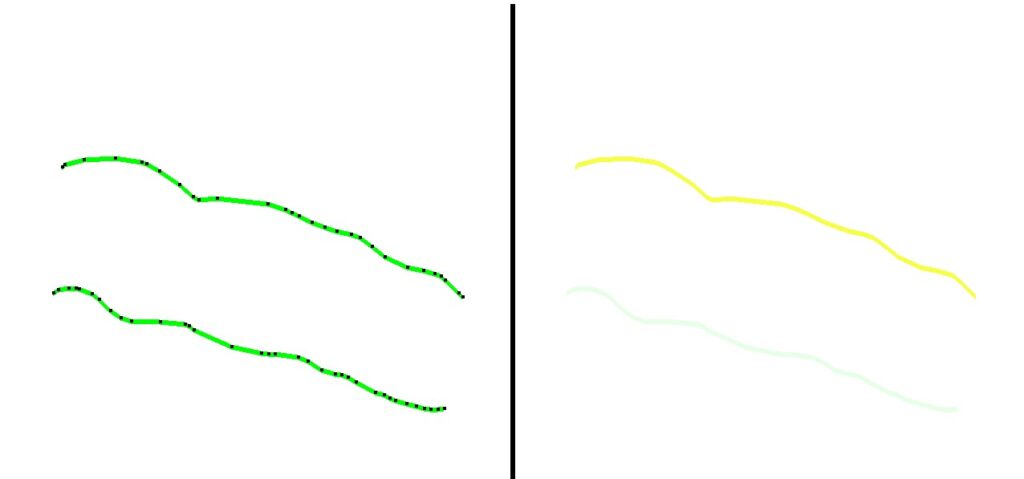
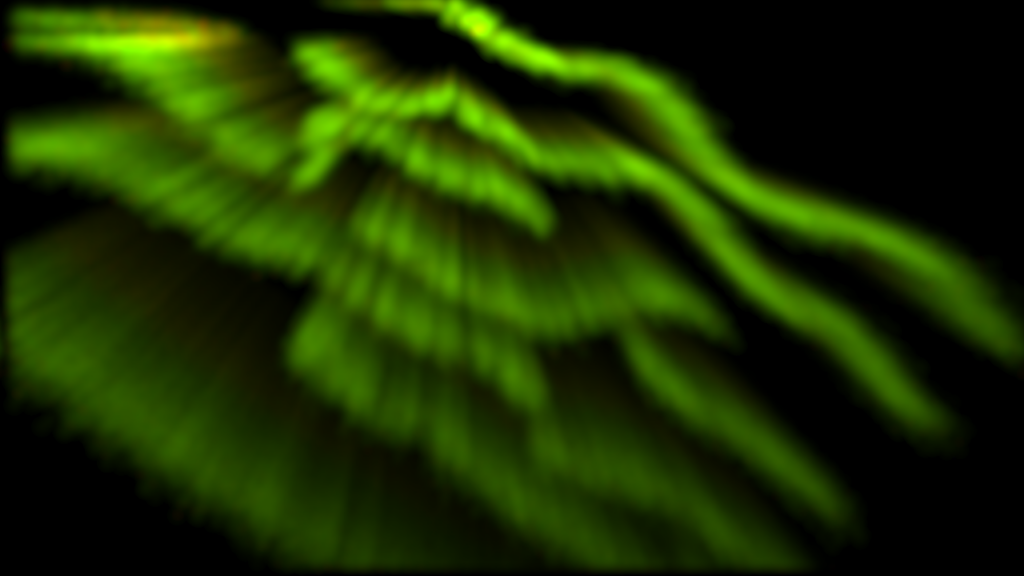
In order to make a desired CG animation using physics-based simulation, artists have to manually adjust the parameters. It will cause a lot of trial and error and became a tough task for most of the artists. In order to automate such adjustment, there are many researches to enable interactive control of simulation. In this research, we proposed a simulation method to control the shape of the aurora on a two-dimensional plane viewed from the magnetic field direction. Based on the shape specified by the artist, our method generate an electric field that will make the specified shape of the aurora by a Lorentz force. The shape control of aurora animation have been realized by performing a advection calculation of charged particles based on the electric field, while the characteristic motion of the aurora like curtains are maintaining. Moreover, we realized other characteristic of aurora, division / connection phenomena by considering the connection information of the control point when generating the electric field distribution.